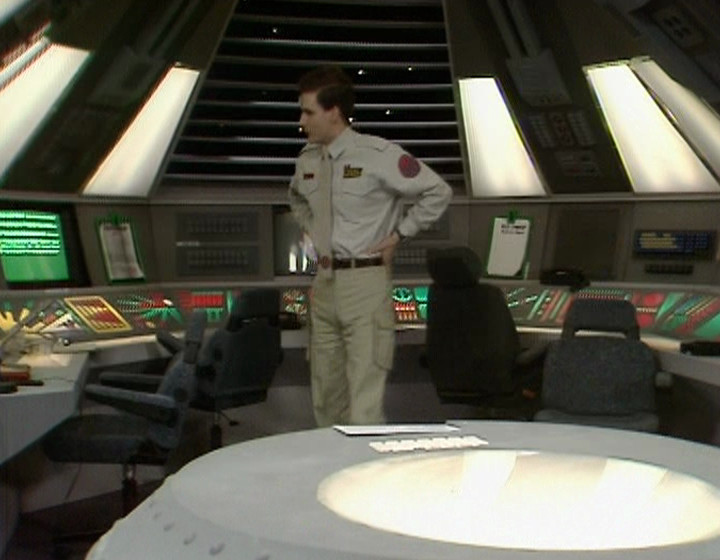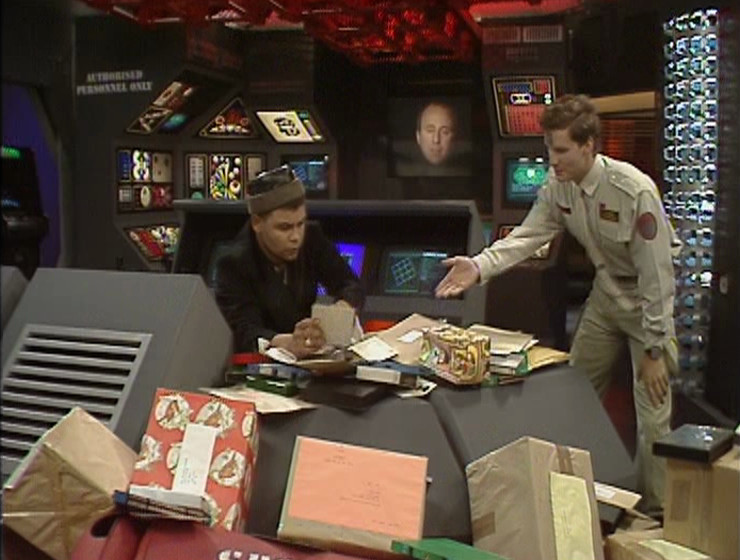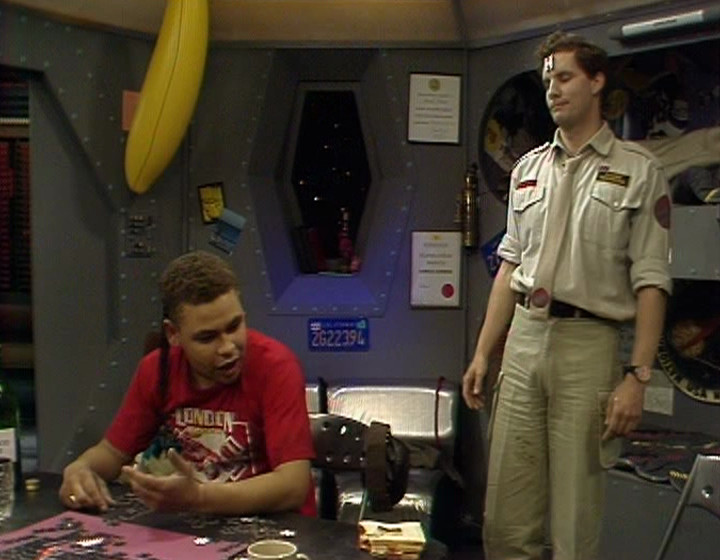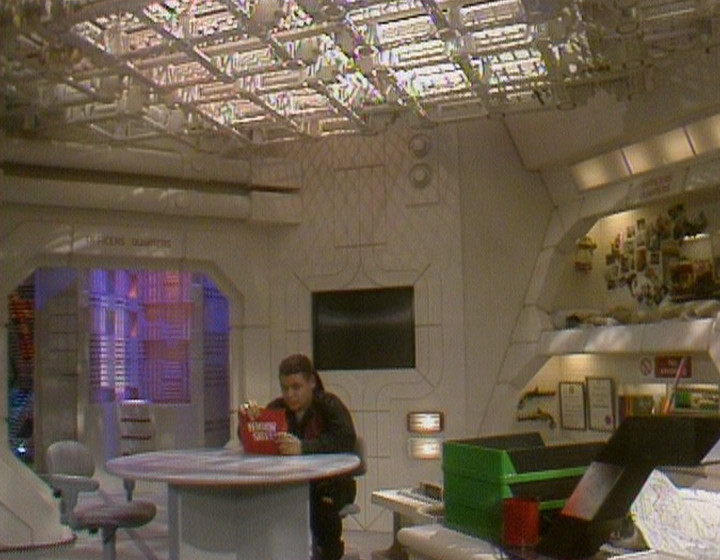Sometimes, if I put on my magenta-tinted spectacles, I think that the most fun I ever had with Red Dwarf was in 1994. That was the very first time I watched the series, and indeed the very first time the show had been repeated from the beginning at all. So I could blithely enjoy the show without being troubled by what other people thought of it… or specifically, what the writers thought of it.
So the fact that Rob Grant and Doug Naylor hated the grey sets by production designer Paul Montague in the first two series of Dwarf was unknown to me. I really liked them. I also liked the new sets from Series III onwards, by Mel Bibby. I just… liked Red Dwarf an awful lot. And Grant Naylor poking fun at the sets of their own show in Me2 (TX: 21/3/88) entirely passed me by.
LISTER: But why are they painting the corridor the same colour it was before?
RIMMER: They’re changing it from Ocean Grey to Military Grey. Something that should’ve been done a long time ago.
LISTER: Looks exactly the same to me.
RIMMER: No. No, no, no. That’s the new Military Grey bit there, and that’s the dowdy, old, nasty Ocean Grey bit there. (beat) Or is it the other way around?
Truth be told, I still love those early Red Dwarf sets, and no amount of people who actually worked on the show slagging them off will change that. In particular, I think the endless permutations of the same basic sections did a really good job at selling the ship as something genuinely huge, and I don’t think this is acknowledged enough. I didn’t even mind the swing bin.
Ah, yes, the famous swing bin. Of all the elements made fun of with those first two series, this one is a perennial. You can see it in action during the very first episode, “The End” (TX: 15/2/88), in McIntyre’s funeral:
It is undeniable: McIntyre’s remains are blasted into space through the medium of a kitchen swing bin, built into a circular table-like object. The commentary on this scene in the 2007 DVD release The Bodysnatcher Collection is brutal:
DOUG NAYLOR: The idea of this is was that it’s supposed to be quite moving, wasn’t it?
ROB GRANT: Yeah, I liked this scene in the script, because it was tender, and a different tone.
DOUG NAYLOR: Yes, but obviously it’s not working as conceived? Now first of all…
ROB GRANT: The canister.
DOUG NAYLOR: The canister, and then the… kitchen bin.
ROB GRANT: Just fantastic! But he pressed that button good, that’s good button-pressing acting… I mean, what is that? It’s not even a good bin, is it?
DOUG NAYLOR: And because there’s nothing in the bottom of the kitchen bin, it just thuds to the bottom, and I think eventually they put tissues in so it didn’t make that terrible clanking noise.
ROB GRANT: Oh dear Lord.
The above scene did actually go out as part of the first episode. But our notorious swing bin also played a big part in what has become one of the most famous deleted scenes in the whole history of Red Dwarf. Shot during the original recording of the first episode, but cut from transmission, we see Lister trying to give a respectful send-off to the crew.
Rimmer’s “What a guy. What a sportsman” is one of the great lost lines of Red Dwarf, as far as I’m concerned. Swing bin or no.
So, what happened to our notorious prop, after the first episode was completed? Well, it hung around in the Drive Room set for the rest of the series, sometimes used as a table whenever the need arose:

Waiting for God

Confidence & Paranoia
But once those first six episodes were over, that was it. Series 1 was recorded at the tail end of 1987; when Series 2 started recording in May 1988, not only was our famous swing bin prop nowhere to be seen, but the entire Drive Room set had been replaced, with something rather less… grey.

Series 1 Drive Room

Series 2 Drive Room
Surely our swing bin was never to be seen again?
[Read more →]
Read more about...
best of, red dwarf, red dwarf sets







